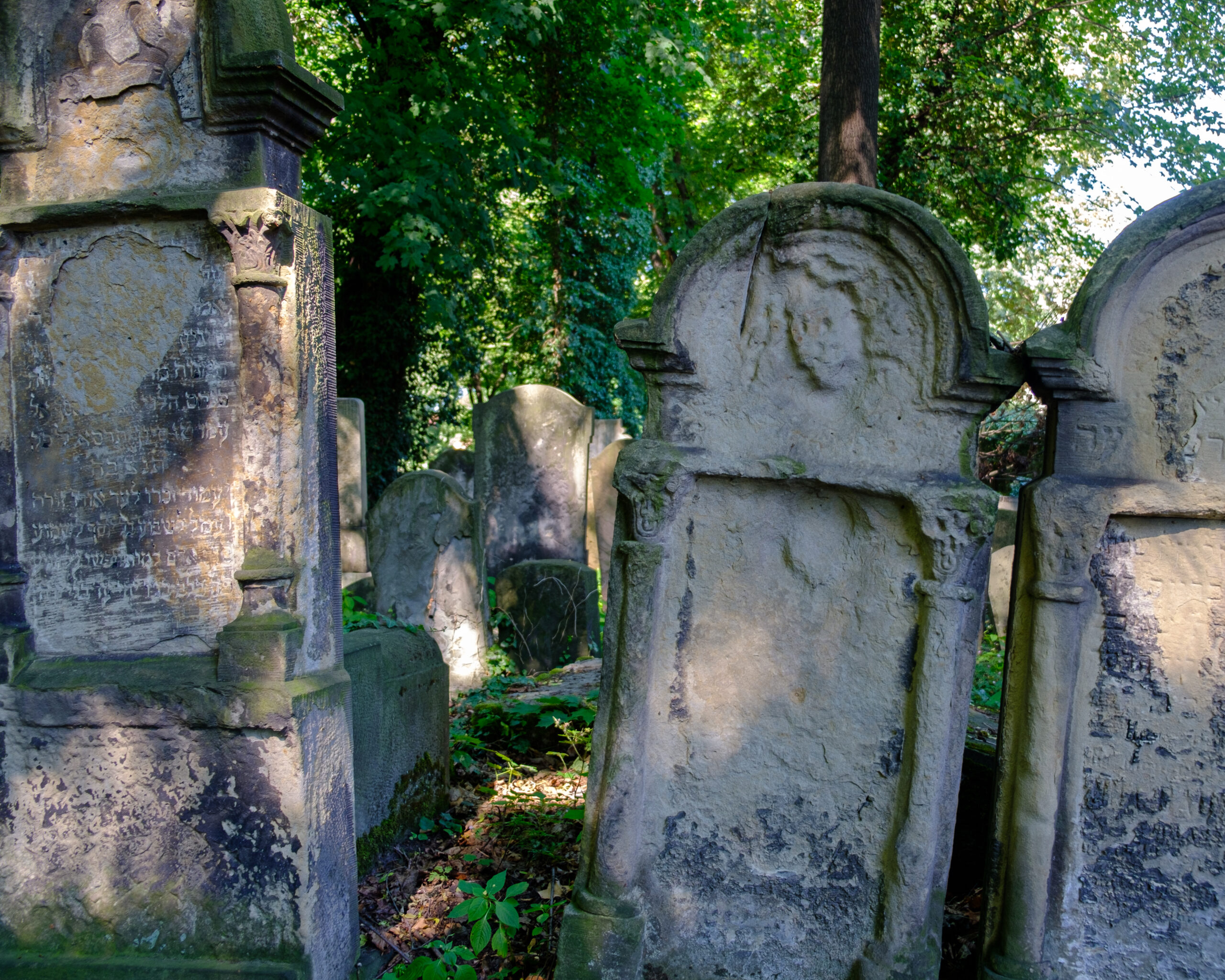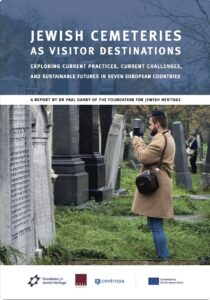
New Jewish Cemetery at Miodowa Streeet, Kraków, Poland. © Paul Darby
The Foundation for Jewish Heritage has recently published the report ‘Jewish Cemeteries as Visitor Destinations: exploring current practice, current challenges and sustainable futures in seven European countries’. The report provides a snapshot of how stakeholders are dealing with the opportunities and challenges of sustaining the heritage of cemetery sites in eastern Europe through their promotion to a diverse range of visitors.
Working in partnership with in-country researchers from Centropa and ESJF, a range of stakeholders were interviewed, data gathered and documentary evidence examined from Georgia, Hungary, Lithuania, Moldova, Poland, the Slovak Republic and Ukraine. The report contains a summary of key findings, and some recommendations to support future work by stakeholders as they meet challenges both general to Europe and specific to their particular countries and regions. What follows is necessarily a very brief summary.
Key Findings and Recommendations
In all of the focus countries committed individuals from diverse backgrounds are working in a number of ways to promote and develop their local Jewish cemetery heritage, often as volunteers in tandem with other careers. It is recognised across the region that the engagement of younger generations is crucial to the work of preserving and promoting Jewish cemetery sites as it is through the younger generations that a more tolerant European future will be realised. Creative work by educators with younger learners and students physically in and with Jewish cemeteries has already demonstrated that young people will not only engage with this heritage, but also work to sustain and promote it. They want to know why it is there, why it has been neglected, and then do something to celebrate their local Jewish cemetery heritage. There are numerous examples of members of the diaspora reconnecting with ancestral places and contributing practically by visiting and working alongside locals to restore and promote the cemeteries where their forebears still rest.

Report “Jewish Cemeteries as Visitor Destinations”, produced in the frame of the “Preserving Jewish Cemeteries” project
We interviewed several individuals who share their knowledge and pride in the Jewish story of their communities through tour guiding. These entrepreneurs have local expertise and can form a link between local communities and visitors, and have enabled visitors who are motivated by so-called ‘Roots and Remembrance’ to discover their heritage through the Jewish cemetery, which is often the sole witness to the Jewish presence in many places. We heard from several genealogist tour-guides across the region who have retrieved forgotten stories and who engage with cemeteries. Networking and professional development would enable these guides to enhance the inclusion of Jewish cemeteries in their storytelling.
There are social and economic challenges both across the region and within each country. Infrastructure and social needs such as housing, health care and education are priorities for all governments and public budgets may not stretch to preserving Jewish heritage. Local stakeholders might contribute to planning processes by demonstrating how aspects of local development and upgrading will benefit Jewish cemeteries, and how investment (no matter how small) can feed back into local gain. For example, infrastructure initiatives such as road building allow increased and more diverse access to certain cemeteries. Signage can encourage visits to places previously ignored by visitors passing through. The expansion of telecommunications networks can make sites easier to find and promote. The Cmentariusz app (Poland) is a citizen-led innovation, whereby Jewish cemeteries can be geo-plotted in an app aimed at hikers and walkers, enabling others to find sites. Photos of the sites and commentaries can be uploaded.
Trans-national organisations have a key role to play as partners collaborating with those local to these sites. They can help repurpose material heritage, build networks, disseminate expertise, sponsor innovative practice, raise awareness and suggest solutions. There is much to benefit stakeholders by forming partnerships and networks with heritage professionals working across Europe. They might also support professional development with tourist authorities, focusing attention on how ignorance or denial of the presence of historic Jewish cemeteries actually undermines efforts to valorise a region’s heritage to potential visitors. Unfortunately, the research found evidence that such ignorance or denial is still present amongst officials in some areas.
There are some examples where this heritage is valorised on national heritage websites. Zabytek, the Polish national heritage portal, is an excellent example of this. Its accessibility in Polish and English increases its reach to potential visitors. Raising the profile of the region’s Jewish cemetery heritage helps to promote understanding of the centrality of the Jewish experience to the story of the region, and publicises a message that this heritage is national.
Examples of innovative outreach and interpretation are already in use which promote and make Jewish cemetery heritage accessible and offer interpretation to both virtual visitors, those interested but who are unable to access sites in person, and those on the ground. The Jewish Szeged app is one high-quality example. The increasing penetration and upgrading of communications infrastructure will enable adoption of the exciting solutions which new technologies offer in promoting and interpreting Jewish cemetery heritage. But attention needs to be paid to quality and sustainability: if an app is launched, who will update it? Who will ensure the visitor information is accurate? Who will pay for the hosting of an interactive website in three or five years’ time?
The region has many opportunities to build sustainable tourism practices for the future. This report shares with ESJF the view that sustaining Jewish cemetery heritage crucially includes engaging the local communities to the cemetery: environmentally and socially responsible heritage means engaged heritage, heritage embedded in its surrounding community and economy. There are signs in some places that entrepreneurs are taking practical steps to build viable and responsible tourist products with local communities. Jewish cemetery heritage needs to be consciously identified within the landscapes ‘eco-tourists’ are invited to explore; slow tourism should include Jewish cemetery heritage when promoting the discovery of a region’s heritage: if Christian churches and folk-art cemeteries are included, why not Jewish cemeteries? It is too valuable a heritage to be sidelined.
By Dr Paul Darby, Researcher, the Foundation for Jewish Heritage.





Follow us: